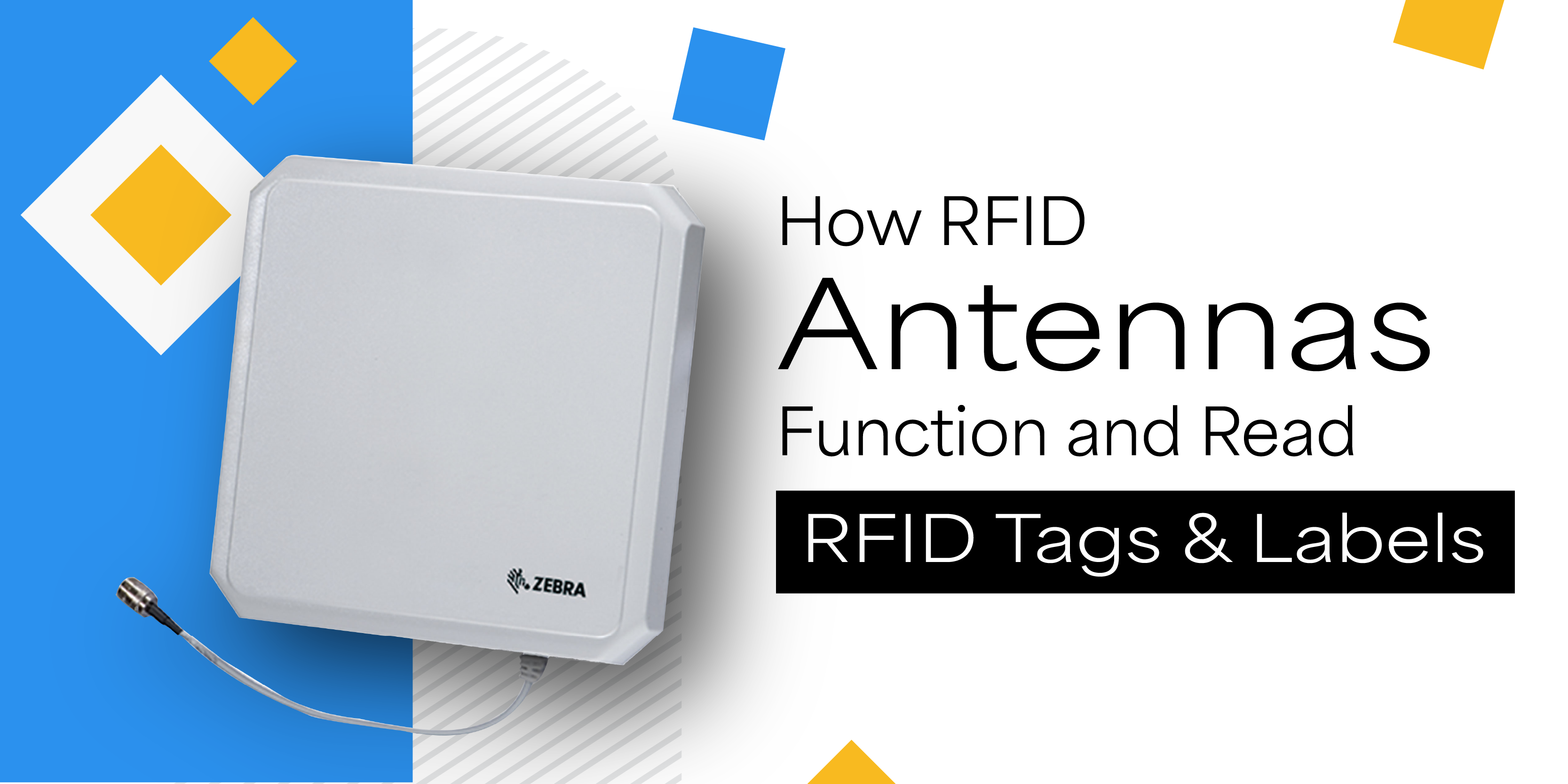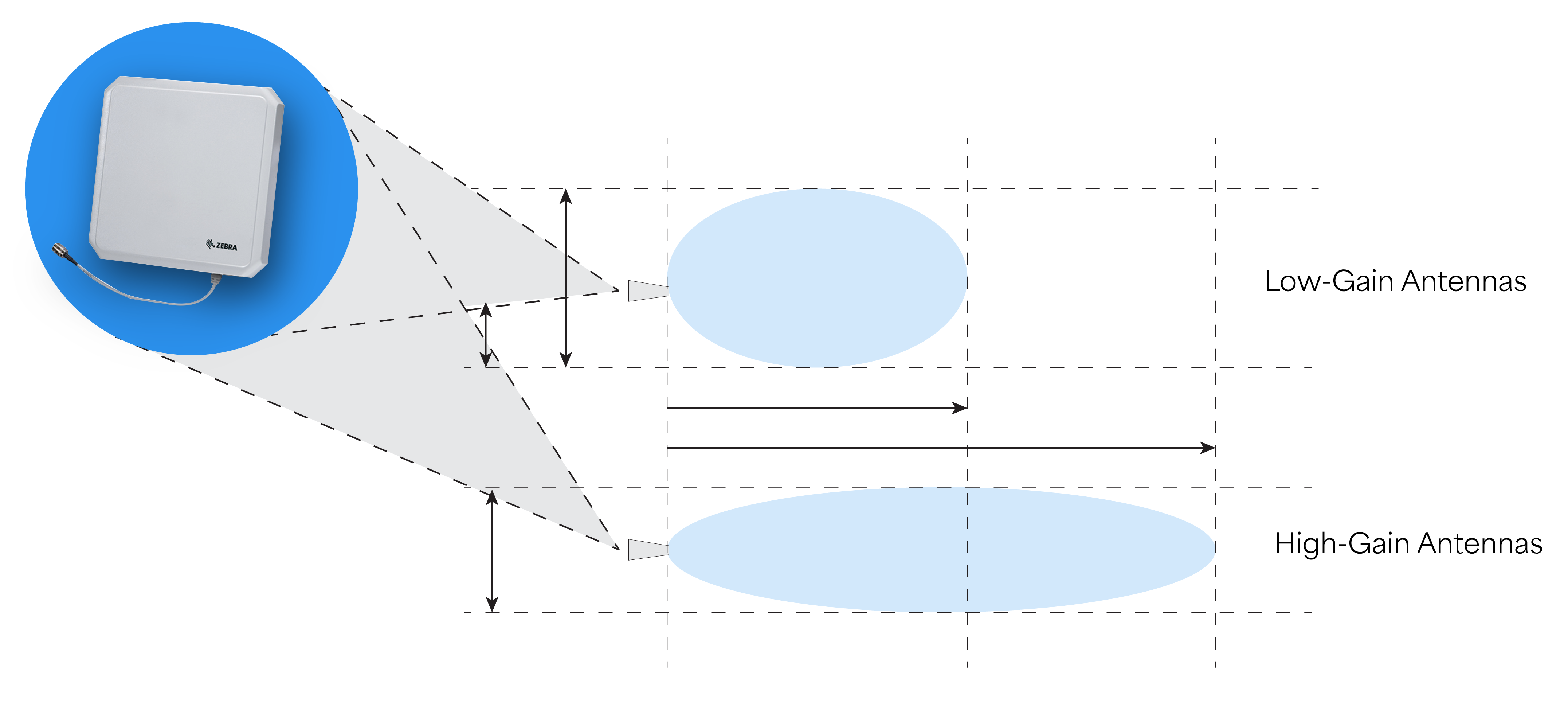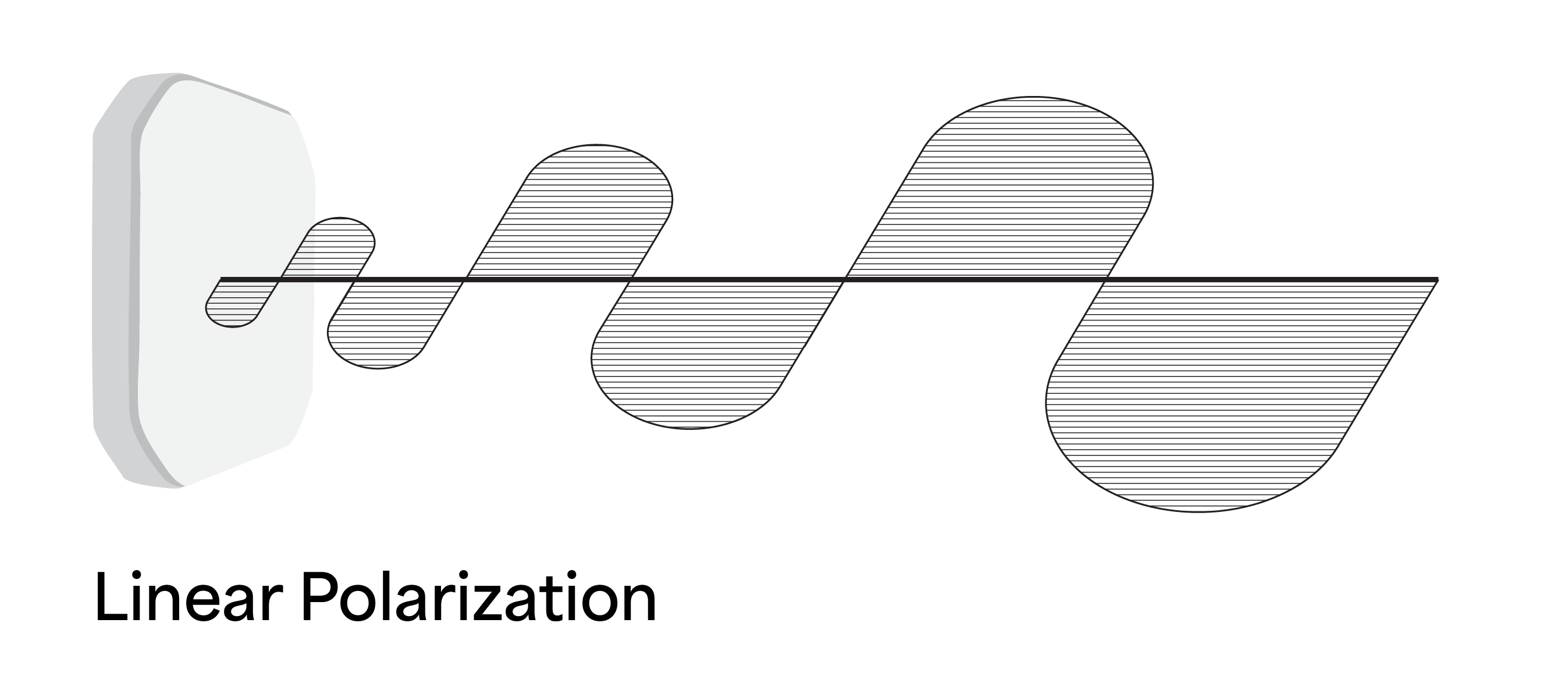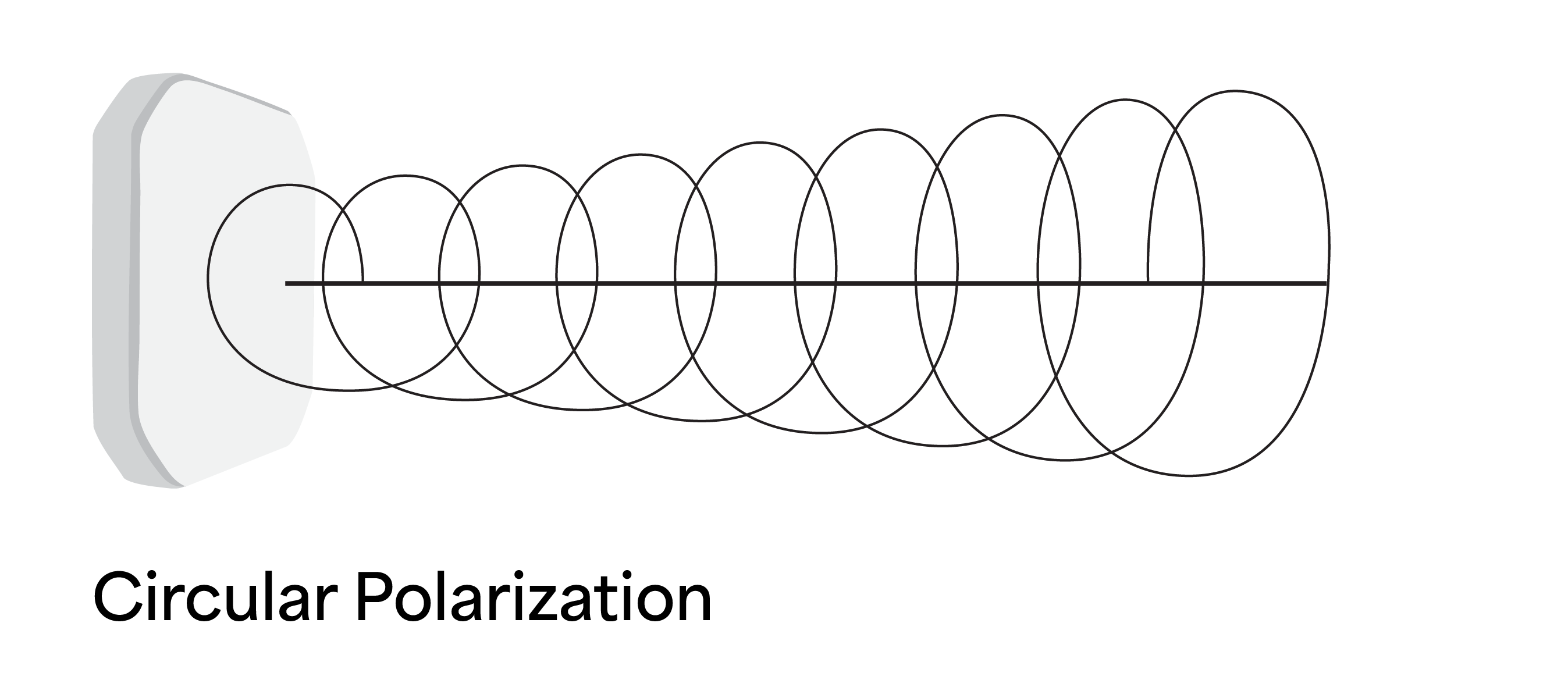How RFID Antennas Function and Read RFID Tags and Labels
Introduction
Radio Frequency Identification has become a cornerstone of modern tracking and automation systems. From warehouses and retail stores to manufacturing lines and hospitals, RFID helps businesses identify and monitor assets efficiently. Central to this technology are RFID antennas—the silent workhorses that power communication between RFID readers and tags.

Understanding how RFID antennas interact with multiple tags simultaneously is crucial, especially in high-density environments where dozens or even hundreds of tags must be read in a single scan. This blog explores how RFID antennas function in multi-tag scenarios, the challenges they face, like tag collision, and how to optimize their performance for accurate and efficient reads.
Basics of RFID Communication
RFID System Components Recap
RFID Reader: Sends and receives radio waves to communicate with tags, acting as the brain of the RFID system.
RFID Antenna: Transmits RF signals from the reader to energize tags and receives their backscattered responses.
RFID Tags: Small devices attached to items that store data and respond when energized by an RFID antenna.
RFID Software: Manages collected tag data, provides analytics, tracks assets, and integrates with business systems for real-time visibility and decision-making.
RFID Frequencies & Protocols
UHF (Ultra-High Frequency): Operates between 860–960 MHz, offering long-range, high-speed reading ideal for inventory and logistics applications.
EPC Gen 2 / ISO 18000-6C: A standard protocol that defines anti-collision rules and data communication for efficient multi-tag RFID operation.
How RFID Antennas Work

Role of the Antenna in the RFID System
The antenna is responsible for both sending and receiving electromagnetic waves. It transmits RF signals that power passive tags and initiate communication. When a tag receives enough energy, it responds by backscattering a signal, which the antenna captures and sends to the reader for decoding.
RF Energy Emission
RFID antennas emit electromagnetic waves in patterns determined by their design. The field strength and coverage area (known as the read zone) define how many tags can be energized and read at once.
Types of RFID Antennas
Based on Beamwidth and Antenna Gain:
Antenna beamwidth refers to the angular span of an antenna's radiation pattern. It determines how wide the antenna’s signal spreads, and is closely linked with antenna gain, which indicates how focused the antenna’s energy is in a particular direction.
Wide Beamwidth and Low-Gain Antennas
These antennas radiate radio frequency energy across a wide area, creating a broad coverage zone. They are ideal for portals, entry points, or environments where a large number of tags need to be read within a confined space.
A low-gain antenna generally has a high beamwidth, meaning it spreads RF energy over a larger area. This provides broad coverage but less concentrated signal strength.
Narrow Beamwidth and High-Gain Antennas
These antennas emit a focused RF beam, ideal for targeted, long-range applications. Use cases include conveyor belt tracking, electronic toll collection systems, or dock door monitoring, where controlled and directional reading is essential.
A high-gain antenna has a narrow beamwidth, focusing RF energy in a specific direction. This results in greater range and more controlled read zones.

Based on Polarization:
Linear Polarized Antennas: These antennas emit RF waves in a single plane, either horizontal or vertical. They are most effective when RFID tags are consistently aligned in one fixed orientation, offering high read accuracy in controlled environments.

Circular Polarized Antennas: These antennas rotate the RF signal in a circular motion, allowing them to read tags placed at varying orientations. They are best suited for dynamic or unpredictable tag positioning, such as in retail or logistics.

Specialty Antennas
Near-Field Antennas: Operate at close range using magnetic fields, suitable for applications where stray reading is not desirable, like retail POS, item-level tagging such as pharmaceuticals or jewellery, smart shelf.
Role of RFID Antennas in Multi-Tag Environments
RFID antennas play a crucial role in ensuring accurate and efficient tag reading in environments where multiple tags are present. In such scenarios, the antenna’s ability to energize and communicate with numerous tags simultaneously is largely determined by key characteristics such as directionality, gain, and polarization.
Below are key factors to consider when operating in a multi-tag RFID reading environment.
Read Zone
The read zone is the invisible, three-dimensional area in which RFID tags can be energized and read. Its effectiveness is influenced by antenna type, power output, polarization, tag design, and environmental factors like metal, liquids, or interference.
Antenna Type: High gain antennas shape narrow zones, while low gain antennas generally produce broader coverage areas.
Power Output: Higher power expands the read zone but may introduce interference; balance is essential.
Tag Sensitivity: More sensitive tags require less power to activate and can be read from further distances.
Environmental Factors: Metal surfaces, water, and physical obstructions can distort or block RF signals, impacting read reliability.
Antenna Placement Considerations
Proper antenna placement is key to successful multi-tag reading. Position antennas at strategic heights and angles to maximize tag coverage, minimize blind spots, and avoid interference from objects or reflective surfaces in the environment.
Height and Angle: Align antennas based on where tags are located—high shelves, floor-level pallets, or moving lines.
Obstacles and Reflections: Avoid placement near metal or glass, which can reflect or absorb signals and degrade performance.
Tag Orientation and Spacing: Antenna position and Polarization should account for how tags are arranged and whether they are consistently or randomly oriented.
Best Practices for Optimizing Multi-Tag Reads
Strategic Antenna Placement: Position antennas at optimal height and angle to maximize coverage. Use multiple antennas if needed to eliminate blind spots and ensure full coverage within the desired read zone.
Power Tuning: Adjust the reader’s transmit power carefully. Too much power may cause signal overlap and interference, while too little can fail to activate distant or weak tags.
Tag Quality and Placement: Choose high-quality RFID tags rated for your specific environment—especially if metal, liquids, or extreme temperatures are involved—and place them in consistent, readable orientations.
Reader Configuration: Tweak reader settings such as session modes and Q values to align with tag density. Proper configuration helps optimize read speed, reduce collisions, and improve accuracy.
Field Testing: Test the system in the actual environment it will be used. This reveals real-world issues like interference, tag shadowing, or environmental challenges that lab tests may not catch.
Real-World Scenarios & Applications of RFID Antennas Interacting with Multiple Tags
RFID antennas play a vital role in enabling real-time visibility and high read accuracy in environments where large volumes of tags are present. In multi-tag environments, the selection, placement, and configuration of antennas directly affect system performance. Here’s how RFID antennas interact with multiple tags across key industries:
Warehousing & Logistics
In warehouse environments, RFID antennas are strategically installed at dock doors, portals, and pallet scanning stations to read hundreds of tagged items simultaneously. High-gain directional antennas are often used to focus RF energy along specific lanes, ensuring that all items on a pallet or within a shipment are energized and read efficiently. Widebeam antennas may be used in larger coverage zones such as staging areas. Antennas must be configured to reduce collisions and accurately read densely packed tags in motion without manual intervention.
Retail Inventory Management
In retail, ceiling-mounted systems are used to perform inventory counts, stock verification, and loss prevention. Antennas must efficiently interact with dozens of clothing tags on hangers or shelves, which may be oriented in multiple directions. Circular polarized antennas are commonly employed here to ensure reliable reads regardless of tag orientation. The ability to read multiple tags quickly and accurately enables fast cycle counts and real-time inventory updates across sales floors and stockrooms.
Manufacturing & Work-in-Progress (WIP)
On production lines, RFID antennas are used to track components and finished goods as they move through various stages. Narrow-beam, high-gain antennas with optimal power settings are positioned along conveyor belts or workstations to precisely read tags on items moving at high speed. These antennas are designed to interact with multiple tags in close proximity while avoiding interference from nearby stations. This ensures accurate tracking of product flow, improves quality control, and enhances process automation by ensuring the right part reaches the right stage at the right time.
Emerging Technologies and Trends
Emerging technologies are significantly enhancing RFID performance in multi-tag environments. Beamforming antennas now offer real-time directional control, allowing systems to focus RF energy precisely on specific zones or moving targets for improved accuracy. AI-enhanced singulation is also gaining traction, where machine learning algorithms dynamically manage tag collisions and prioritize reads based on context, improving efficiency in dense tag scenarios. Additionally, the integration of IoT and various environmental sensors, such as temperature, motion, or weight, enables RFID systems to collect richer, real-time data. This convergence drives smarter automation, predictive analytics, and better decision-making across industries.
Conclusion
RFID antennas play a vital role in enabling seamless multi-tag communication. Their ability to energize, receive, and filter data from multiple tags hinges on thoughtful design, proper placement, and smart system configuration.
By understanding the dynamics of read zones and environmental influences, organizations can achieve high read accuracy even in dense, complex environments. Whether in retail, logistics, or manufacturing, optimizing your RFID antenna setup is key to maximizing the value of your RFID investment.
Recent Posts
-
How Smart Cabinets are Revolutionizing Surgical Inventory
Hospitals face constant challenges in managing surgical inventory. From stockouts that delay critica …Dec 1st 2025 -
RFID Software vs Manual Tracking — Cost and Accuracy Compared
Inventory and asset tracking are the backbone of efficient operations in logistics, retail, and manu …Nov 28th 2025 -
RFID Anti-Theft Tags—How They Work and Why You Need Them
In today’s fast-paced retail environment, protecting merchandise while maintaining efficiency is a c …Nov 24th 2025




